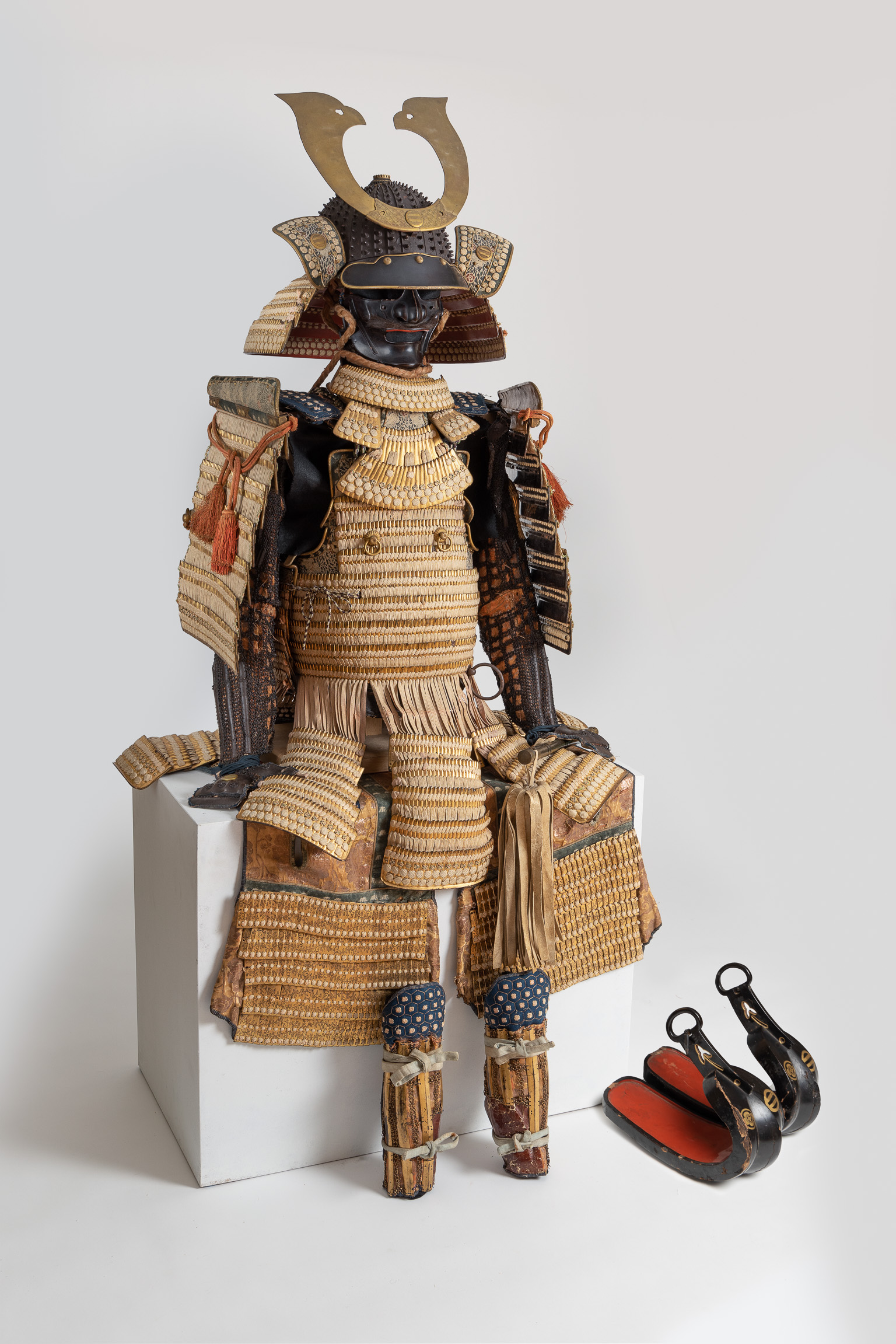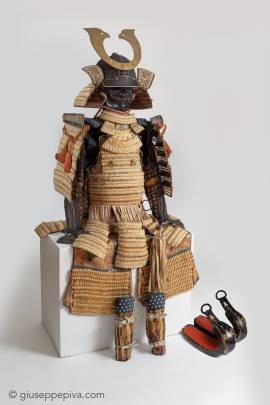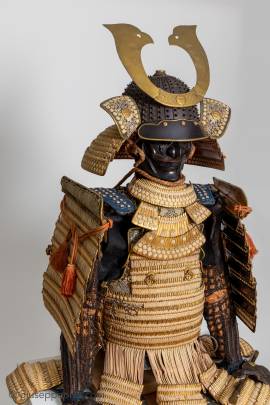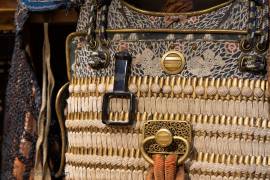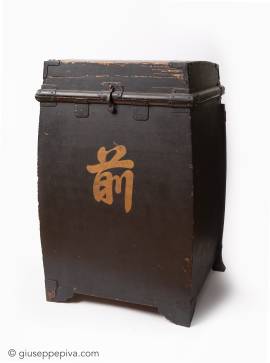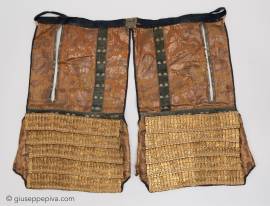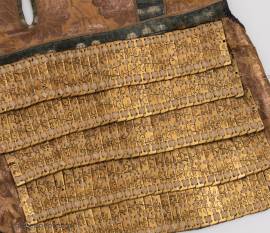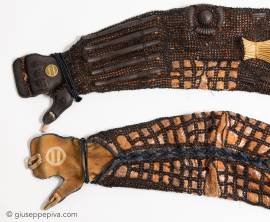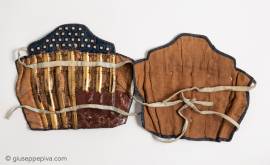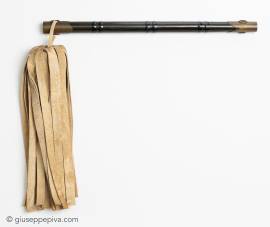Hon-kozane ni-mai do tosei gusoku
Samurai armor bearing the kamon of the Toyama family
Edo Period, 18th century
Hand-written origami by Prof. Yamagami Hachirō (1902-1980), dated 31 March 1964.
Due to its high production cost, golden armor was infrequent during the Edo period. The hon-kozane (true scale) construction for the cuirass, the engraved gilt brass borders, and the haidate (thigh guard) decorated with a floral scroll motif painted with black lacquer over gold all indicate that this suit belonged to a samurai of a wealthy clan. The armor also features a nodowa, an additional protection for neck and throat that is exclusive to high-rank armor. The helmet is similarly of excellent quality: a 32-plate zaboshi kabuto with 13 rivets per plate and a chrysanthemum-shaped washer on each rivet.
The broad sode (shoulder guards) and fukigaeshi (helmet turns-back), the visor’s shape, the use of stenciled leather, and the plate construction of the haidate are all distinctive of revival armor, which was being produced in Japan beginning in the early eighteen century.
This authentic samurai armor is accompanied by an old exhibition tag which states that it was used by Toyama Awajimori, lord of Mino Naegi Castle. The kamon of nibiki type (family crest with two bars) which is shown on various parts of the armor was in fact used by the Toyama clan during the mid Edo period.
The armor features stirrups (abumi), a saihai (commander's baton), and tabi.
Inventory Nr: 1765
Info works
Copyright © 2016 - giuseppe piva - VAT: 05104180962


